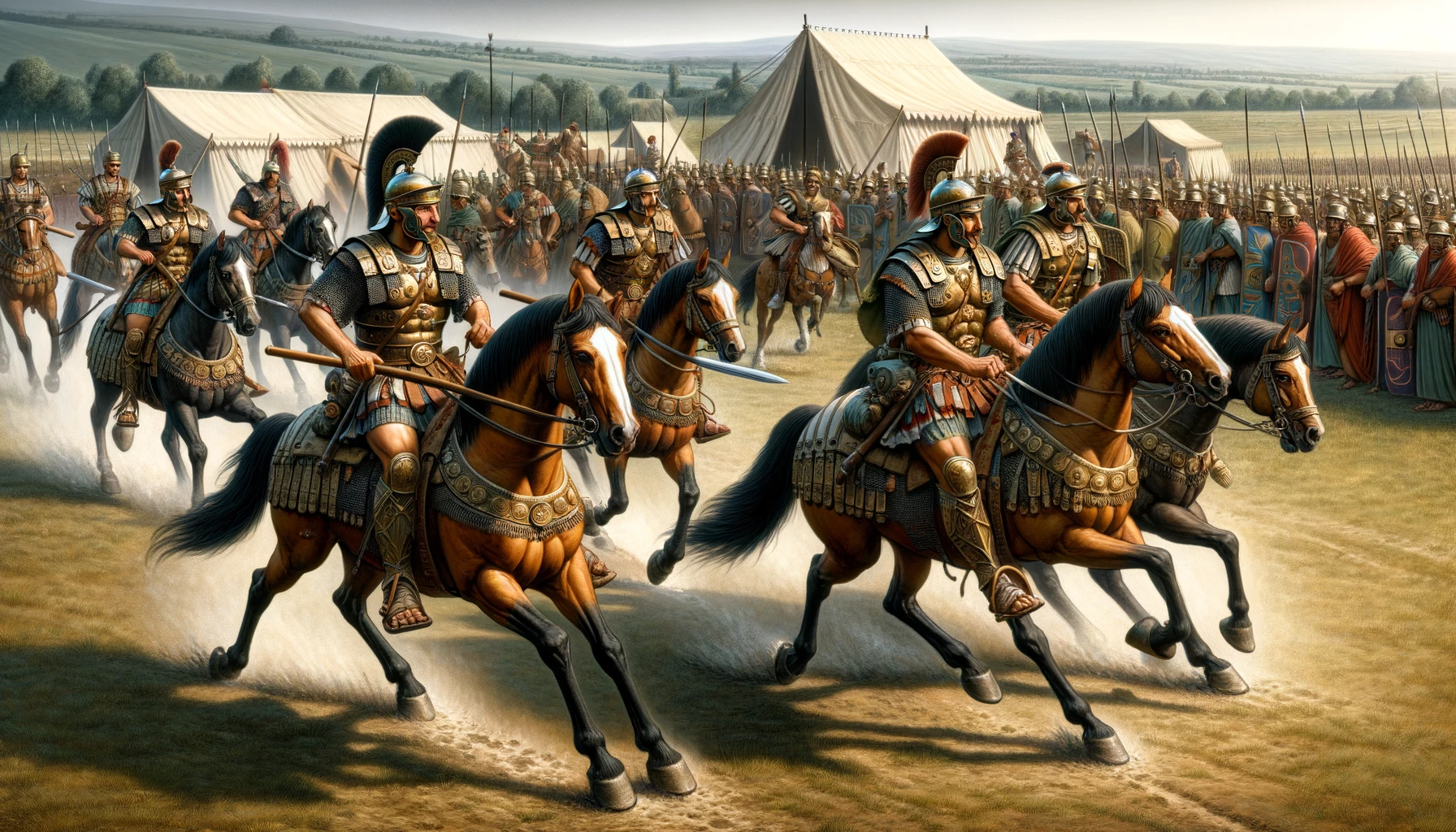The Cohors Nona (or VIII) Batavorum, a Roman auxiliary unit of 500 men known for its scouting capabilities and mixed infantry and cavalry composition, was predominantly recruited from the Batavian people. Notable for its role as scouts (‘exploratorum’), this unit is recognized in various military diplomas and inscriptions.
What do we understand from the Cohorts name?
- Batavorum : The soldiers of the cohort were recruited from the Batavian people when the unit was formed .
- Antoniniana : the Antoninian. The addition occurs in the inscription ( AE 1935, 163 ).
- milliaria : 1000 men. Depending on whether it was an infantry cohort ( Cohors milliaria peditata ) or a mixed unit of infantry and cavalry ( Cohors milliaria equitata ), the unit’s target
- strength was either 800 or 1040 men. In military diplomas the symbol is used instead of milliaria ∞ used.
- equitata : partially mounted. The unit was a mixed unit of infantry and cavalry. The addition occurs in the inscription ( AE 1935, 163 ).
- The unit was a Cohors milliaria equitata . The target strength of the unit was therefore 1040 men, consisting of 10 Centuries of infantry with 80 men each and 8 Turmae of cavalry with 30 riders each.
History of the Cohors IX/VIII Batavorum
Historically, after the Batavian uprising at the end of 70 AD, this unit, along with similar units, was relocated to Britannia. Their last known presence was in the Vindolanda fort, as evidenced by several Vindolanda tablets. These tablets indicate that the cohort transitioned from a quingenaria (with a strength of 480/600 men) to a milliaria (800/1040 men) during its time in Britain. Recent research suggests that the Batavians left Vindolanda shortly after July 16, 105, but their exact locations in the following years remain uncertain.
The first confirmed presence of the unit in the province of Raetia dates to a military diploma from 116 AD. Subsequent military diplomas from 139/140 to 167/168 AD continue to document the unit’s presence in Raetia. A votive altar for Jupiter, dating back to 104-106 AD and found in Weissenburg, names Marcus Victorius Provincialis as the troop commander, indicating the unit’s presence in Raetia immediately after their deployment in Britain.
The Cohors IX Batavorum is last mentioned in the The Notitia Dignitatum as part of the forces stationed at Batavis (Passau) under the Dux Raetiae primae et secundae. Known locations of the cohort in Britannia include Vindolanda (Chesterholm), with possible locations in Moesia Superior and Raetia including Buridava (Stolniceni), Batavis (Passau), Ruffenhofen, and Weissenburg Castle.
Despite some uncertainties and differing views among historians about the unit’s immediate movements post-Britain, the Cohors IX Batavorum’s significant role in Roman military history is well-established.
Members of the cohort
The following members of the cohort are known.
Commanders
[.] Paternus (Tab.Vindol.II,534)
[.] Severus ( AE 1969/70, 526 )
Cl(audius) Tyrannus, a tribune in Vetus Salina ( CIL 3, 10329 ), between 100 and 200 AD.
[G]rattius Crispinus (Tab.Vindol.II,297)
Marcus Flavius Miles , a prefect
Marcus Simplicius Quietus , a tribune
Valerius Timothy , a tribune
Other
[.] Lucilianus, a Decurio ( CIL 16, 132 )
Domit. Niger, a soldier (around 211) ( CIL 3, 3345 )
Equester, a centurion (Tab.Vindol.II,263)
Lentinus Prudentis, a rider ( AE 1906, 116 )
